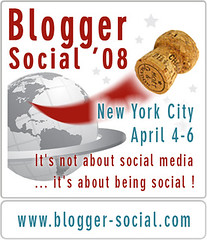




I have been ruminating on the linkage between trust and participation over the last couple of days … particularly in light of Mario’s post on the Fifth P of Marketing — participation … and trying to piece together a sense of where this is all heading. As you have all probably experienced, there is a converging of technologies and processes — the distinctions between work/life, professional/private, author/collaborate are collapsing before our very eyes. Meanwhile, the institutions that we have, in the past, trusted (from banks to governments) are coming under fire and are heaving under the stresses of our cynical consumerist glare. Even the darlings of our new connected universe, Google, are feeling this strain.
Where once we turned to Google to sort through the dross of the ever-expanding Internet, we now turn to our personal networks. The difference now, however, is that our personal networks are dispersed across geographies, timezones and languages. We use tools and sites like Facebook, LinkedIn and even Twitter to mine specific answers to our global and local needs. Robert Scoble calls this "social graphing" — take a look at the second video here.
One of the ideas that interested me most in this concept was the linkage between how social networking activates and validates inter- and intra-community trust. Basically, this means that I am more likely to make a decision based on feedback or information garnered from my network of trusted advisors. For example, I am more likely to try Facebook if all my friends are using it — even the stalwart David Armano has finally capitulated 😉
From a brand and marketing point of view, these networks are strategically important … but as Robert Scoble points out, they are, thus far, impervious to search engine optimisation. This means that ONLY those brands that are ACTIVE in social media will have any chance of reaching and activating these networks. In short — brands need to participate … for only through participation can they DEMONSTRATE the qualities that will lead to trust. So if you are asked "should my company be blogging"? The answer should be clear.
With thanks to Spell with Flickr.
Blogged with Flock
Tags: Trust, Participation, Robert Scoble, David Armano












